HenriRobideau.ca
HenriRobideau.com
1971 Photo Narrative ~ Mud City Estates
In the spring of 1971 I had been living in Vancouver for about a year, a refugee from the violence of America. During that time I had been camera-less in Vancouver with little or nothing to show toward the advancement of my photography career. I hustled my portfolio of American photographs around town but didn’t find any work until Fred Douglas, the photographer for the Vancouver Art Gallery, payed me to help build a darkroom under the stands at Capilano Stadium baseball park for a kids summer photography program.
At about the same time I was asked to build a darkroom for the Cool Aid Craft Factory in a Yaletown warehouse on Hamilton St. The Craft Factory was a utopian worker collective, manufacturing ceramic hash pipes and aluminum geodesic dome struts. The first pile of struts was sent down to the Yippie occupation at All Seasons Park for the construction of squat domes à la Buckminster Fuller, so I borrowed a 35mm Canon camera and headed for West Georgia Street where I shot the pictures for Mud City Estates, my very first Vancouver work and the opening piece in the 2015 grunt gallery Eraser Street exhibition.
My photography career at the Craft Factory was cut short when the ceramic hash pipe kiln caught fire and the darkroom went up in flames, but thanks to the VAG’s backup baseball stadium darkroom I was able to put together my first Vancouver story.
Exhibited 2015, Eraser Street show, grunt gallery, Vancouver, Canada.
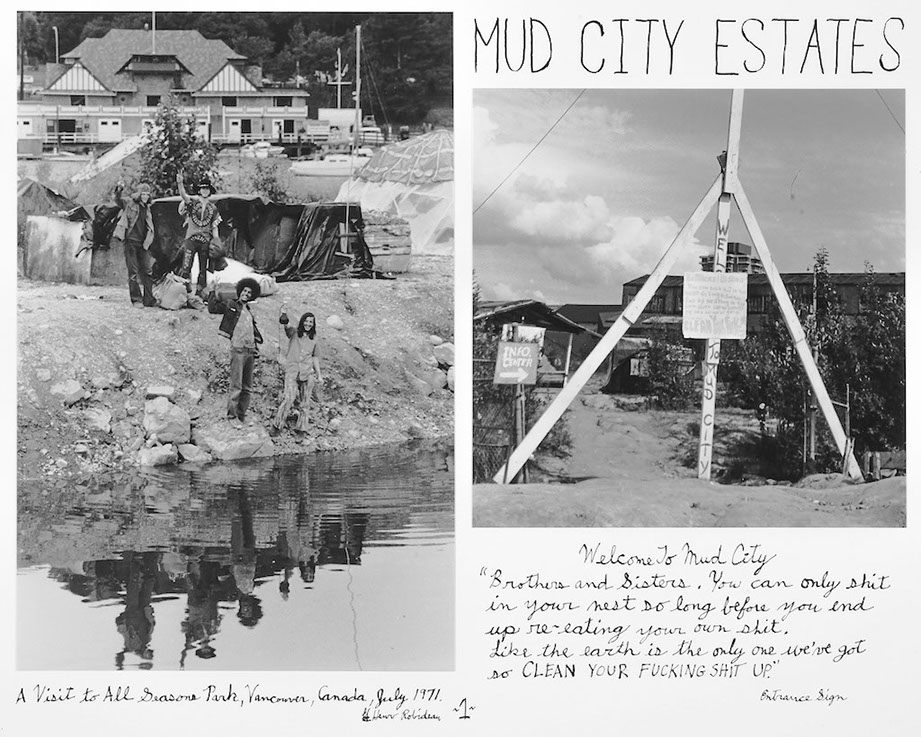
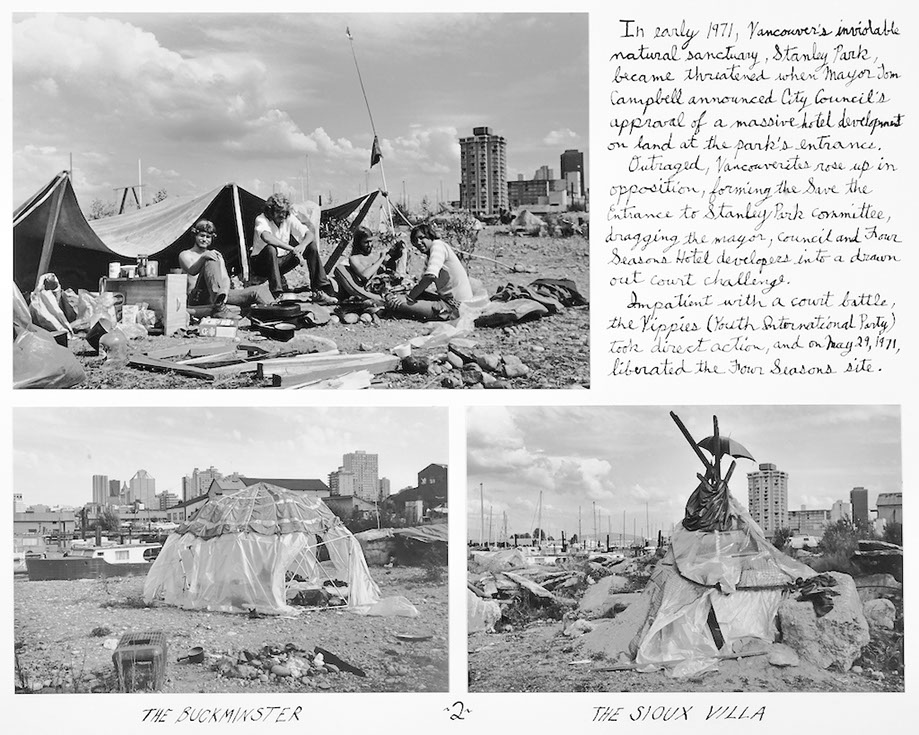
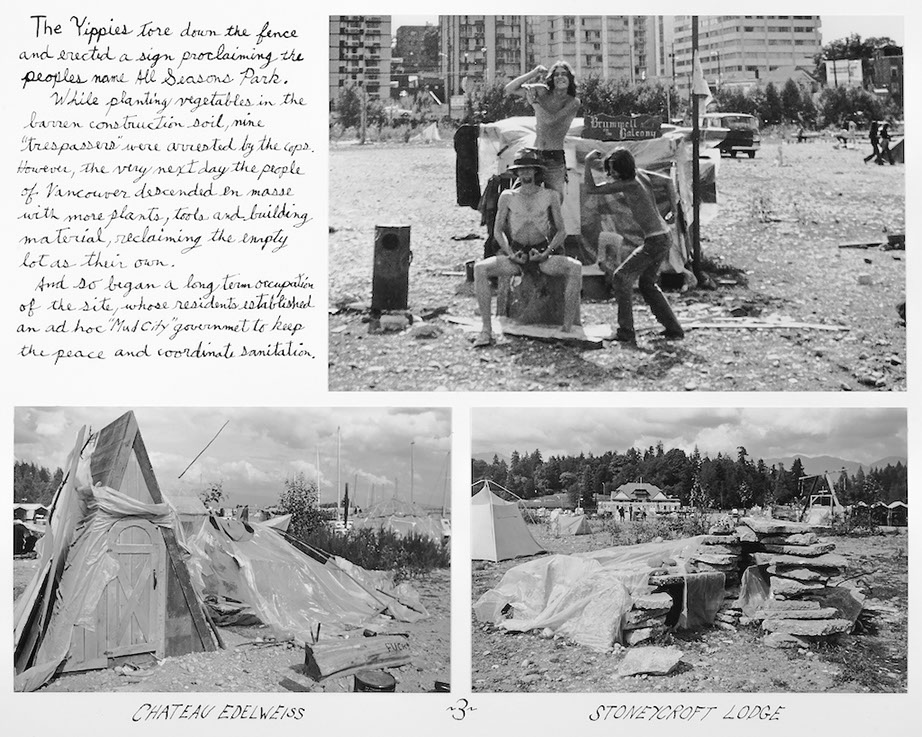
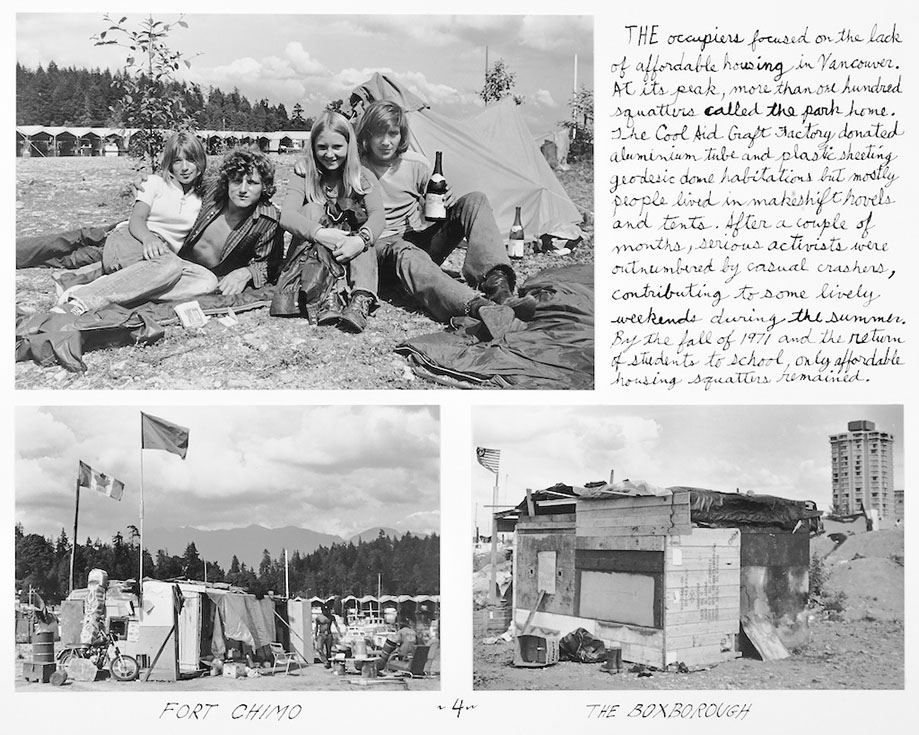
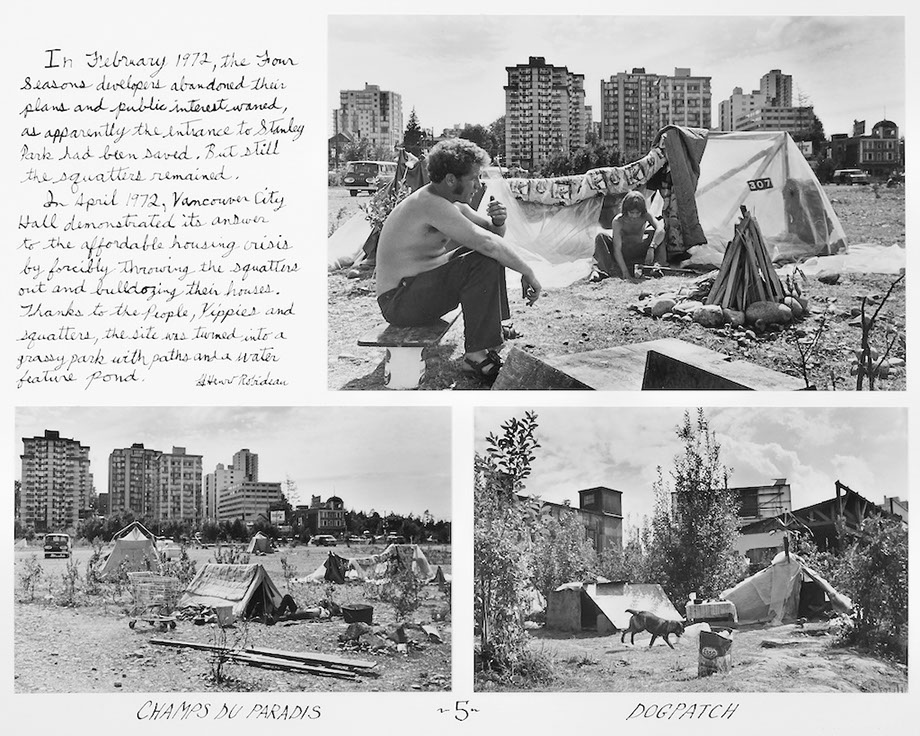
MUD CITY ESTATES
A Visit to All Seasons Park, Vancouver, Canada, July 1971.
Welcome To Mud City
“Brothers and Sisters. You can only shit in your nest so long before you end up re-eating your own shit. Like the earth is the only one we’ve got so CLEAN YOUR FUCKING SHIT UP.” Entrance Sign
In early 1971, Vancouver’s inviolable natural sanctuary, Stanley Park, became threatened when Mayor Tom Campbell announced City Council’s approval of a massive hotel development on land at the park’s entrance. Outraged, Vancouverites rose up in opposition, forming the Save the Entrance to Stanley Park Committee, dragging the mayor, council and Four Seasons Hotel developers into a drawn out court challenge. Impatient with a court battle, the Yippies (Youth International Party) took direct action, and on May 29, 1971, liberated the Four Seasons site.
THE BUCKMINSTER THE SIOUX VILLA
The Yippies tore down the fence and erected a sign proclaiming the peoples name All Seasons Park. While planting vegetables in the barren construction soil, nine “trespassers” were arrested by the cops. However, the very next day the people of Vancouver descended en masse with more plants, tools, and building material, reclaiming the empty lot as their own. And so began a long term occupation of the site, whose residents established an ad hoc “Mud City” government to keep the peace and coordinate sanitation.
CHATEAU EDELWEISS STONEYCROFT LODGE
THE occupiers focused on the lack affordable housing in Vancouver. At its peak, about one hundred squatters called the park home. The Cool-Aid Craft Factory donated aluminium tube and plastic sheeting geodesic dome habitations but mostly people lived in makeshift hovels and tents. After a couple of months, serious activists were outnumbered by casual crashers, contributing to some lively weekends during the summer. By the fall of 1971 and the return of students to school, only affordable housing squatters remained.
FORT CHIMO THE BOXBOROUGH
In February 1972, the Four Seasons developers abandoned their plans and public interest waned, as apparently the entrance to Stanley Park had been saved. But still the squatters remained. In April 1972, Vancouver City Hall demonstrated its answer to the affordable housing crisis by forcibly throwing the squatters out and bulldozing their houses. Thanks to the People, Yippies and squatters, the site was turned into a grassy park with paths and a water feature pond.
CHAMPS DU PARADIS DOGPATCH
Previous
Next
Original 1971 photographs and text destroyed in 1987 Montreal flood, reprinted 2014, narrative series, five 24 x 20 inch multi image montages, selenium toned gelatin silver fiber base black and white photographs dry mounted to rag board, hand written text.
©2021 Henri Robideau